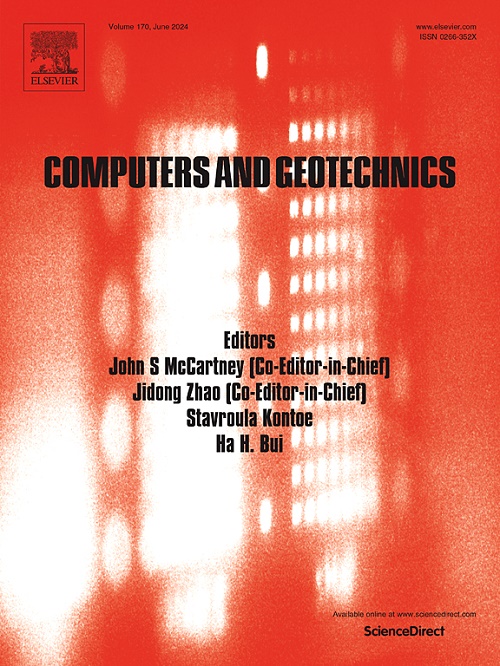Numerical investigations into the influence of drainage on the uplift behaviour of plate anchors in clay
IF 5.3
1区 工程技术
Q1 COMPUTER SCIENCE, INTERDISCIPLINARY APPLICATIONS
引用次数: 0
Abstract
This paper presents one of the first systematic finite element investigations into the rate effect during plate anchor uplift in clay, with a focus on the influence of soil drainage. Some numerical difficulties in simulating partially/fully drained anchor uplift are first discussed, and a method to address these issues is proposed. The most striking benefit of the proposed method is that it allows the hydro-mechanical coupled anchor-soil interaction to be efficiently simulated, with improved numerical stability, by simply using a non-detachable anchor-soil interface. After validation, the proposed method is used to simulate anchor uplift at different embedment and uplift rates, spanning from drained to fully undrained conditions. The influence of uplift rate on the force–displacement relations and failure mechanisms are discussed. The threshold rates to differentiate drained, partially drained, and undrained conditions are quantified. Anchor penetrations are also simulated under the same conditions. Comparisons with uplift cases indicate that the force–displacement curves in uplift and penetration are only identical in undrained conditions.
求助全文
约1分钟内获得全文
求助全文
来源期刊

Computers and Geotechnics
地学-地球科学综合
CiteScore
9.10
自引率
15.10%
发文量
438
审稿时长
45 days
期刊介绍:
The use of computers is firmly established in geotechnical engineering and continues to grow rapidly in both engineering practice and academe. The development of advanced numerical techniques and constitutive modeling, in conjunction with rapid developments in computer hardware, enables problems to be tackled that were unthinkable even a few years ago. Computers and Geotechnics provides an up-to-date reference for engineers and researchers engaged in computer aided analysis and research in geotechnical engineering. The journal is intended for an expeditious dissemination of advanced computer applications across a broad range of geotechnical topics. Contributions on advances in numerical algorithms, computer implementation of new constitutive models and probabilistic methods are especially encouraged.
 求助内容:
求助内容: 应助结果提醒方式:
应助结果提醒方式:


